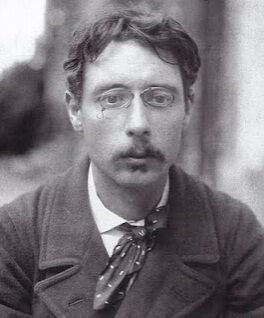Pierre Bonnard
(French,1867- 1947)
Born in Fontenay-aux-Roses in 1867, Pierre Bonnard originally studied law in Paris before deciding to devote himself to painting. In 1888, he joined the École des Beaux-Arts, and the following year he was to join the group of artists known as the Nabis. These artists were strongly influenced by the Fauvists and Impressionists and also included Edouard Vuillard and Maurice Denis, with whom he shared a studio in Montmartre. His first show in Paul Durand-Ruel's Paris gallery was held in 1896, and from 1903 he was exhibiting regularly in the Paris salons. Alongside his groundbreaking paintings, he was also an important illustrator and graphic artist; he regularly made designs for La Revue Blanche, and in 1891 met his compatriot and fellow artist Toulouse-Lautrec, another pivotal character in the development of modern poster art.
In 1910, he was to leave Paris for the south of France, which was to have a dramatic impact on the defining characteristics of his style of painting. Bonnard is known for the intense colours and densely worked paintings he produced; the intensity and dynamism of his style is in contrast to his use of simple interior scenes, depictions of sun-drenched gardens, and rustic still lifes. The highly personal content of his works reflect his reputation as being an extremely private individual who kept out of public life and spent much of his time with his wife Marthe, who features in many of his works.
Pierre Bonnard died in Le Cannet, France in 1947. He is known as one of the most important and influential post-impressionist artists, and his works are held in the most important public and private collections in the world.

